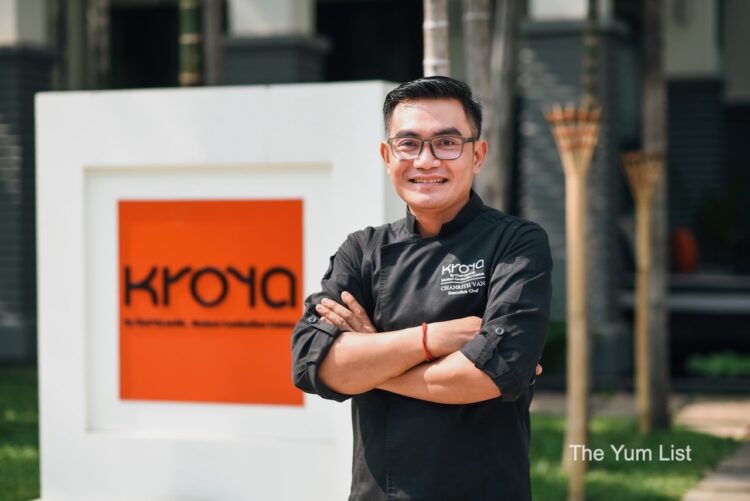Van Chanrith – Executive Chef, Shinta Mani Angkor
In this interview, Van Chanrith, executive chef at Shinta Mani Angkor and Bensley Collection Pool Villas, shares his insights into the industry.
What do you do?
I am an Executive Chef at Shinta Mani Angkor and Bensley Collection Pool Villas.
How did you get into the industry?
I started my career at the end of 1999 when I graduated from high school. I began in a restaurant as a dishwasher, then moved up to commis, demi chef, chef de parties, sous chef, executive sous chef, cooking teacher, and executive chef.
What food memory from your childhood or travels stands out?
Fermented fish and beef. I like cooking fish and meat.
What’s the best/worst part of your job?
Best: Creativity
Worst part: Public speaking (I’m quite shy).
What’s Van Chanrith’s favourite food and beverage pairing?
Beef lok lak with red wine.
What’s one of the funniest things you’ve seen behind the scenes?
Funniest: One of our lady chefs was assigned to handle the wok section for the first time. She ran from the kitchen every time the wok started to catch fire.
A day in the life of Van Chanrith is …
Usually, I start my work early, at 7:30 am and finish at 9-10 pm.
Morning shift: Assist the team with the breakfast operations.
Noon: Cooking class if there are any bookings and lunch operations.
Review the market list order for the next day.
Afternoon: Afternoon tea.
Conduct kitchen team food training.
Evening operation from 6 pm to 10:30 pm.
What does Van Chanrith do for fun?
Cycling/off-road biking.
What would you like guests to know about Shinta Mani Angkor and Bensley Collection Pool Villas?
Our dinner-tasting menu includes a plant-forward option. Other restaurants usually don’t offer this, or they offer it, but it’s very limited in their menu. We tell a story about each dish on the menu and its origin.
How have you grown in your profession? What have you learned from your start in the industry until now? Are there any misconceptions?
Yes, I began with the restaurant as a dishwasher and then moved up to commis, demi chef, chef de parties, sous chef, executive sous chef, cooking teacher, and executive chef—basic cooking, cutting, and food safety hygiene. As an executive chef, you are not only expected to know how to cook but also to lead and train the team, be creative and develop menu concepts, control food costs, plan and schedule, budget, and forecast.
What would you like people to know about being an executive chef as a profession?
Being an executive chef is not just about knowing how to cook food. It involves working long hours and being patient, planning and directing food preparation and culinary activities, being creative in menu development, controlling costs, scheduling and organizing, coaching, ensuring food safety and hygiene, and building a cohesive team.
What would you like guests to know about Kroya by Chef Chanrith restaurant in Siem Reap?
Yes, there are many restaurants in town, but most of them do the same thing. What we do differently is our food. We elevate local Cambodian cuisine to a higher level while preserving the original taste and flavour—not fusion like everyone is trying to do now.
What practices do you currently implement or hope to implement to work towards social responsibility and sustainability in the future?
We have our own rooftop garden where we plant herbs, vegetables, and edible flowers. We’ve switched from plastic boxes to glass bottles for milk, and we make our fruit jam and bread pudding from leftover fruit and bread.
What can guests look forward to in the upcoming months?
Our new dinner Kroya menu and wine pairing menu.
the temples.
Read more interviews with people in the hospitality industry here, like Van Chanrith, and stay updated with the latest gourmet and travel recommendations on The Yum List on Facebook here and The Yum List on Instagram here.

